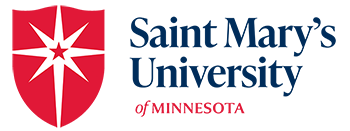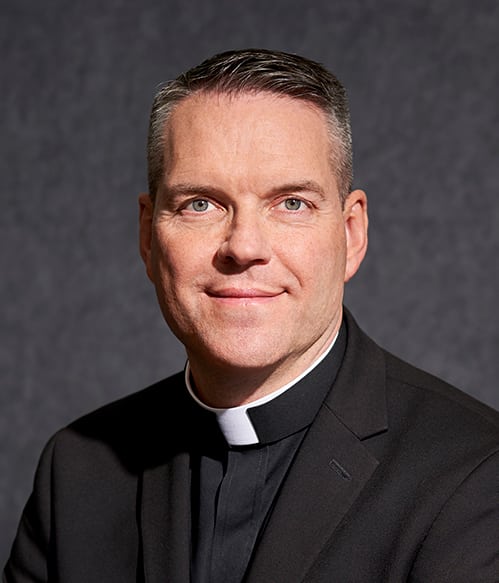Saint Mary's Newsroom
Campus ConnectionAn update from the president to alumni and parents

Saint Mary’s Concert Band presents ‘Shades of Blue’ March 11
WINONA, Minn. — The Saint Mary’s University Concert Band will present “Shades of Blue” on Sunday, March 11, at 3 p.m. in the Page Theatre to celebrate national Music in our Schools Month.
The ensemble will perform a variety of works related to the theme of “blue,” either connected in title or another way. The concert will open with John Barnes Chance’s “Blue Lake Overture,” and the centerpiece composition will be Frank Ticheli’s “Blue Shades.” The performance will also include traditional American blues arrangements “Beale Street Blues” and “Salute to American Jazz.” Student conductor Rachel Prince will lead the band in Hazo’s beautiful “Blue and Green Music,” inspired by Georgia O’Keefe’s painting of the same title.
Tickets are $10 for adults, $5 for students and seniors. They can be purchased at Page Theathre or by calling the box office at 507-457-1715 (noon to 6 p.m. weekdays).
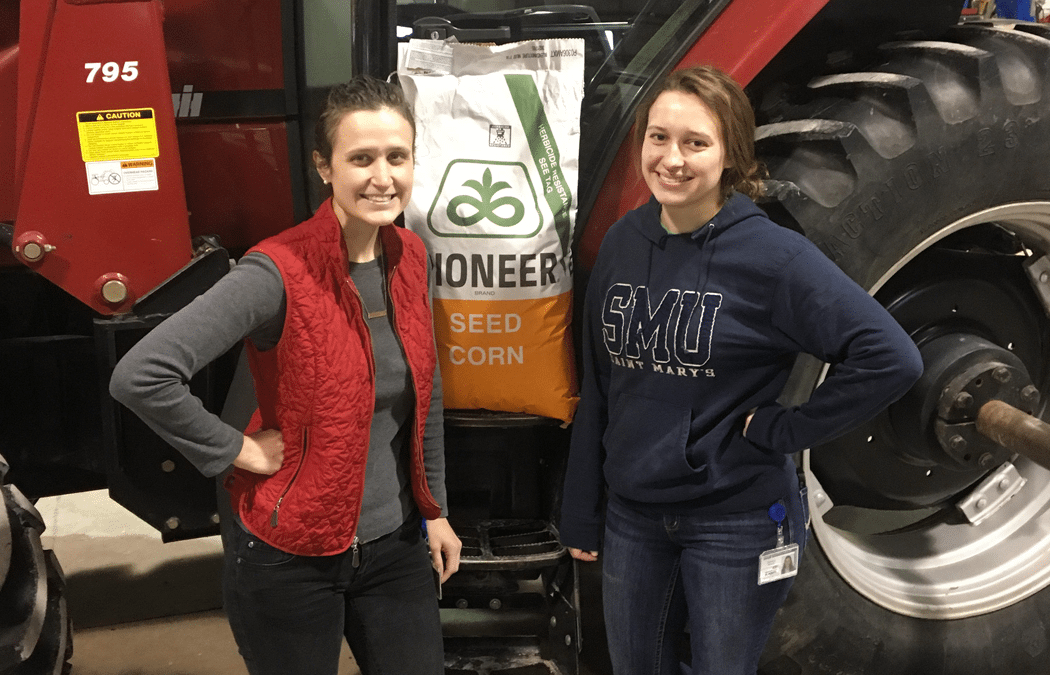
Sisters are outstanding in the field of plant breeding
Looking back, Dorothy Kirsch ’19 and JoAnn Harren ’11 may not have always appreciated their chores — growing up on their family hog farm in Wesley, Iowa.
But both sisters now appreciate the strong work ethic, the responsibility, and the agricultural life that ultimately has led them to careers in plant breeding.
Harren, who majored in biology at Saint Mary’s, now works as a senior research associate with DuPont Pioneer Research Station in Algona, Iowa; Kirsch, a junior biology major, is currently interning at the same facility.
Harren paved the way. In high school, she really enjoyed the sciences and got involved with the World Food Prize Youth Institute. She earned a Borlaug-Ruan International Internship through which, after high school, she worked at a grad school lab at China Agriculture University in Beijing.
While attending Saint Mary’s, she did internships through DuPont Pioneer for three summers. And after graduating, she continued her studies at the University of Minnesota and did an internship at the International Rice Research Institute in the Philippines.
“The professor/student interaction in the Science Department at Saint Mary’s helped me discern how I would like to further my education,” Harren said. “The support I received prepared me for graduate school.”
She returned to Pioneer about four years ago after getting married.
“As a senior research associate,” she said. “I do a lot of the molecular breeding work, looking at corn and soy plants creating whole genome predictions. So we don’t need to grow a plant to see if it’s going to grow or not.”
Harren thrives on the challenging environment at Pioneer and says it’s exciting to see her work utilized. “For my master’s thesis, I mapped and published quantitative trait loci (QTLs) for Soybean Death Syndrome in soybeans. These QTLs have never been utilized outside of my graduate thesis work. With Pioneer, I can see the research I do being put to use. That’s what drives me to enjoy my job.”
When her sister arrived at Saint Mary’s, she too knew she wanted to go into agriculture with a chemistry emphasis. Kirsch discovered she fit better in biology than chemistry, but is quick to point out she’s enjoyed all of her classes.
“I haven’t had a single professor I don’t like,” she said. “The professors are always there and willing to help. It’s a great college and I’ve had a great experience so far.”
Kirsch is currently completing an eight-month internship at DuPont Pioneer Research Station, where she enjoys meeting with and learning from breeders. She’ll also be completing her senior thesis, “Plant breeding techniques by the use of Per Se Traits in Maize (Zea Mays).”
Her objective is to compare the phenotypic traits between hybrids and their corresponding inbred parents to determine if the inbred traits are indicative of the hybrid phenotypes. “I’m going to look into the way that breeders develop hybrid lines based on the inbred data and determine if it’s a good way or if they should be doing it differently,” she said.
Her future goal is to earn an advanced degree in plant breeding. “When I talk to corn breeders, it’s exciting to hear the new developments and see the progress they’re making,” she said. “Years of material goes into one hybrid. The goal is to have a high-yielding hybrid that can withstand diseases and droughts and high wind, all the conditions it might encounter in a field.”
Kirsch said there’s no doubt her background has made an impact on what she’s decided to do with her future. “I appreciated living on a family farm. It helped me have a better work ethic.”
Harren agrees. “The work ethic is huge along with the respect for the land, as well as respect for people,” she said. “You need to have that strong work ethic to be able to thrive in this type of industry. I would not be where I am today if I did not grow up on that family farm.”
Harren said she’s proud to work with a company like DuPont Pioneer, which is working to help farmers in Africa and the Middle East increase agricultural productivity and food production through improved crop yields. Additionally, she said, the company has found a way to fortify sorghum grain, a mainstay in African diets, with nutrients to make it healthier.
“Pioneer is about feeding the world. It’s great to be part of a company like that,” she said.
Photo caption: Sisters JoAnn Harren ’11, left, and Dorothy Kirsch ’19
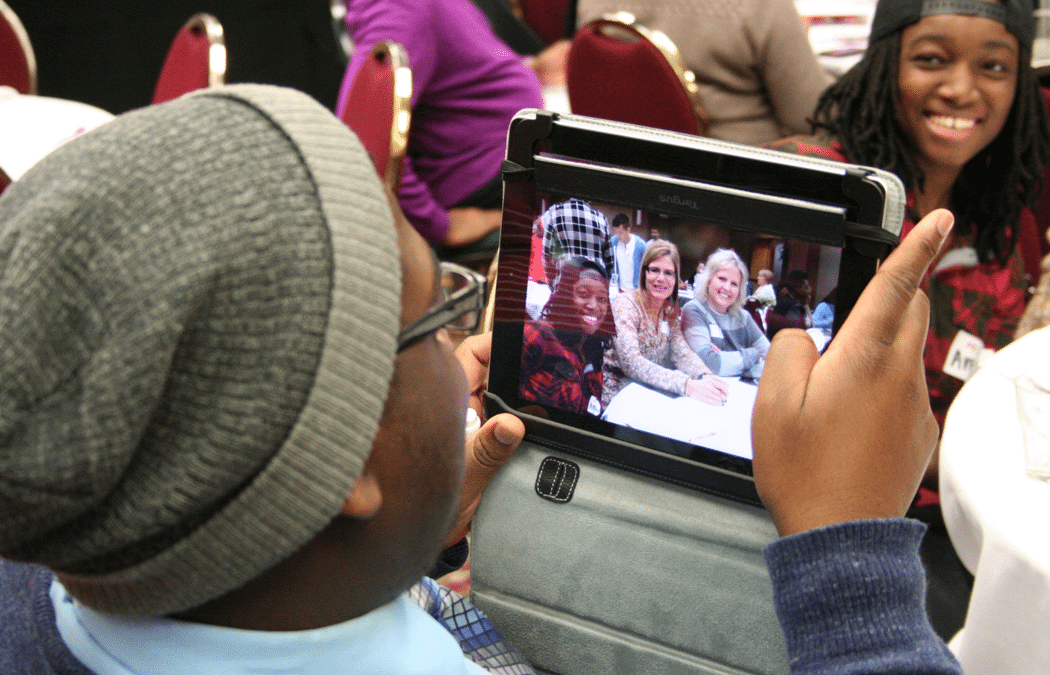
Saint Mary’s Missing Voices summit spotlights inequities in education
MINNEAPOLIS, Minn. — This year’s Missing Voices: Equity in Education Summit at Saint Mary’s University of Minnesota will focus on educational equity — with special emphasis on native, immigrant, and refugee voices by embracing the idea that “We Are All Related (Mitakuye Oyasin).”
Several regional leaders in educational inclusion will be honored for their work, including Tony Sanneh, former professional soccer player and founder of The Sanneh Foundation.
This annual day-long summit uniquely brings together Minnesota youth, parents, educators, and community leaders to engage in dialogue and creative problem solving surrounding the inequities and gaps in the educational system.
The conference — to be held 8 a.m. to 2:30 p.m. Thursday, Feb. 15, on Saint Mary’s Twin Cities Campus — strives to bring multiple people and perspectives to the table to share wisdom and lived experiences in an effort to improve the future of education.
The summit will feature several presenters:
- Jim Knutson-Kolodzne, in his presentation, “We are all Related,” will provide information on the 11 Minnesota tribal nations and will provide educators with the knowledge they need to increase their sensitivity and awareness of Minnesota American Indian history, language, and culture.
- Wing Young Huie, an award-winning Twin Cities photographer, will showcase photos and facilitate a group discussion. For 30 years Huie has worked to capture the complex cultural realities in America.
- Ron Leith, a native elder of the Red Lake Band of Chippewa, will perform a blessing.
- The Red Tree Singers, a drum group from Morton, Minn., will perform, including both Ojibwe and Dakota singers.
- Shegitu Kebede, a celebrated author and advocate for refugees, will give a first-hand account of what it means to be a refugee and to immigrate to the United States. After fleeing war-torn Ethiopia for Kenya, Kebede immigrated to the United States in the early ’90s.
- Two youth authors from Green Card Voices will share their immigration experiences.
This year’s conference will center around the phrase “Mitakuye Oyasin,” translated from the Lakota language as “We Are All Related.” “The essence of this concept is that our lives are truly and profoundly connected to others and the world around us,” said Knutson-Kolodzne. In this time of division and polarization, we must recognize ourselves in the faces of others, particularly historically marginalized groups.
Awards will be presented to individuals who have made a difference in working toward equality in education:
- The Community Advocate for Change will be presented to Tony Sanneh, former professional U.S. soccer player and founder of The Sanneh Foundation. Sanneh’s work with the Conway Community Center in St. Paul, the Dreamline coaching program, and the Haitian Initiative have made a significant local and global impact, particularly on disadvantaged youth.
- The Culturally Responsive Leader awards will be presented to Michael Rogers, president of Risen Christ School, the first language immersion school in the Archdiocese of Saint Paul and Minneapolis, and Kathryn Haave, a second-grade teacher and literacy coach at Glacier Hills Elementary School of Arts and Sciences. Rogers has demonstrated an impact on educational equity as he works to serve low-income students from a variety of backgrounds. Haave helped her district develop and design units of study that are inclusive and selected texts that are free from bias. She then partnered with Native American community experts to develop and pilot these units and texts in her classroom while providing feedback and progress reports to the Native community.
- The Youth Equity Solutions (YES!) award will be presented to Hambdi Kelil, a student leader at Wellstone International High School. Kelil has worked to advocate for his native Oromia, an area within Ethiopia that has been targeted and unrecognized by the Ethiopian government. After being jailed for joining an organized protest and then released, Kelil made his way to the United States.
Since 2012, Saint Mary’s Missing Voices summit has brought together educators and administrators, students, families, and community members in order to move from discussion to action. This conference is hosted by Saint Mary’s Graduate School of Education.
General registration is $125. Youth and family members may attend for free, but advanced registration is required. Check-in and continental breakfast begins at 7:30 a.m., and the conference will be held at the Saint Mary’s University Center, located on Park Avenue, Minneapolis. Registration and more information is available online at smumn.edu/missingvoices. Questions can be directed to missingvoices@smumn.edu.
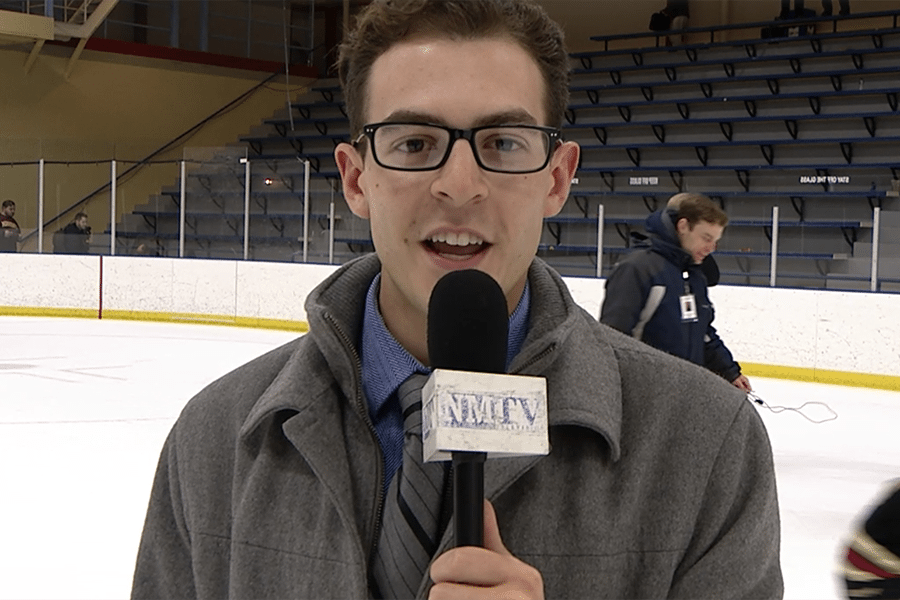
Turning a passion for sports into a broadcasting career
For Rick Palermo ’16, nothing beats the excitement of play-by-play sports action.
Although a recent graduate, Palermo has already broken into the competitive sports broadcasting and producing world — and he’s loving every action-packed minute of it. As a production assistant at Fox Sports North and a freelance broadcaster, Palermo is pushing toward his dream of one day broadcasting for a professional baseball team.
Palermo landed a job at Fox Sports North in Minneapolis, Minn., one year ago, and his main job is to edit and produce video. Whether it’s the Minnesota Twins, the Wild, or the Timberwolves, Palermo probably had his hand in the pre-game highlights. Although he isn’t in front of the camera at Fox Sports North yet, Palermo is keeping his skills sharp by broadcasting for two other stations.
“The thrill of performing is the coolest part,” he said. “You do all your homework, prepare for the game, look up stats, memorize names. And then you get one chance to perform it in front of a live audience.”
A natural speaker, Palermo says he still gets a little nervous in front of the camera. Although his role as production assistant at Fox Sports North is all behind the scenes, learning from the professionals is helping him sharpen his broadcasting skills.
“The most difficult part of starting in broadcasting is finding your voice and having the confidence,” Palermo explained. “You also have to be quick-witted and able to think on your feet.”
Palermo’s love for sports runs deep. True to his Chicago roots, Palermo grew up watching the Cubs and Blackhawks and is still a big fan. He got involved as the baseball team manager in high school, which set him up to go on to be the baseball manager at Saint Mary’s all four years.
Student managers don’t only keep the book and stats during games; Palermo attended every practice and game and even helped run drills. “It’s a big commitment,” he said. The challenging role helped him gain valuable experience.
Palermo started at Saint Mary’s as a business major but soon learned he wanted to explore other areas. After taking Intro to Mass Communications with Dean Beckman, associate professor and department chair, he switched to a public relations major.
In a field exploration class assignment, Palermo tried his hand at broadcasting. He started sportscasting with Saint Mary’s men’s and women’s basketball his sophomore year and soon discovered he had a passion for the career. Wanting to do more, he got involved with with HBC (Hiawatha Broadband Communications), the local TV station in Winona, doing play-by-play work. Palermo estimates he commentated more than 50 games by the end of his four years at Saint Mary’s, including volleyball and hockey too.
Palermo said Saint Mary’s gave him experience and helped him find opportunities. “At a smaller school like Saint Mary’s, you’re more connected with other students, teachers, and athletes,” said Palermo. “You have a lot of opportunities available to make your own and turn into whatever you want. You’re part of a community that works together and makes each other better.”
That community was strengthened in part by the connection Palermo was able to make with the De La Salle Christian Brothers. Before coming to Saint Mary’s, he attended St. Joseph High School, a Lasallian ministry, in Westchester, Ill.
“The Lasallian connection is great,” Palermo said. “It gave me another perspective on life and taught me how to be a good person.”
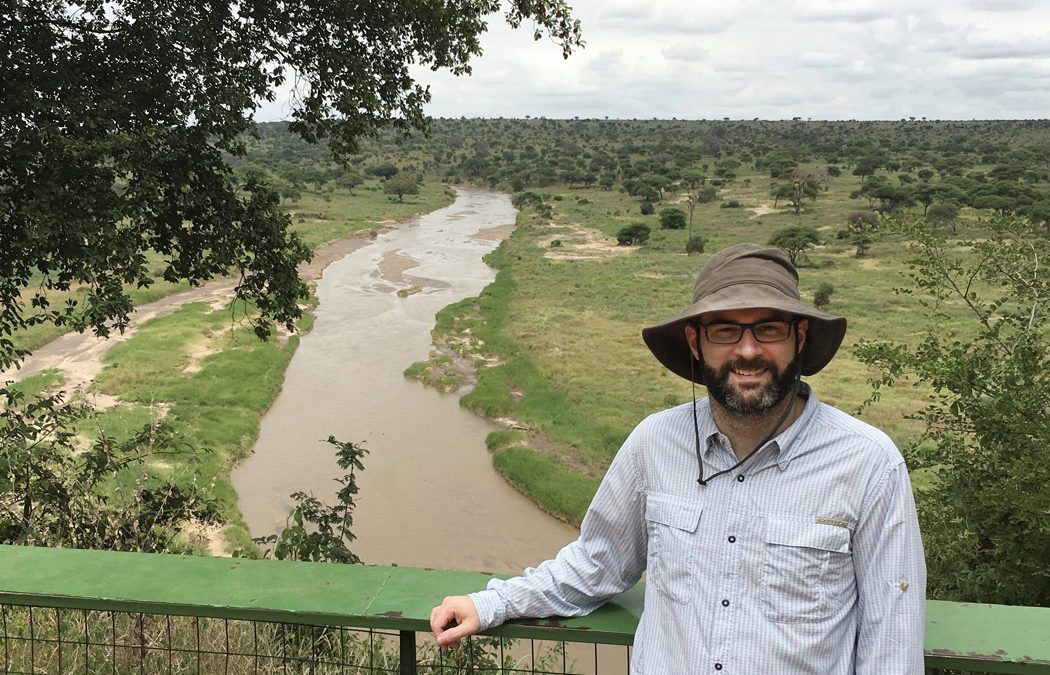
Using GeoAnalytics to solve global issues
Adam Pfister C’06, M’10 can’t deny that speaking to the U.N. in early December was a career highlight.
But Pfister’s career is full of highlights. As a solutions engineer on the nonprofit and global organizations team for Esri, he works closely with organizations who are solving global problems like the World Health Organization and Bill and Melinda Gates Foundation, which is successfully eradicating Polio.
A graduate of Saint Mary’s University’s M.S. in Geographic Information Science program, Pfister works for a company which is an international supplier of geographic information system (GIS) software and technology.
“A solutions engineer is just a fancy term for talking with customers or anyone interested in GIS technology, understanding their problems, and seeing how spatial technology can help them. It’s a unique opportunity to talk with people doing some really amazing work,” Pfister said. “We work with foundations, nonprofits and U.N. departments and entities, and national organizations — a wide gamut of people.”
During a presentation at the U.N. Secretariat Building in New York City at the beginning of December, Pfister was able to explain how Esri uses GIS that can speed and shift sustainable development. The Office for Outer Space Affairs, together with the United Nations Development Program, organized the “Discovery Day.”
“It was a one-day event, with a number of speakers, and everyone had 10 minutes to talk,” Pfister said. “We chose to focus on those two themes, shift and speed, and what I talked about was shifting our thinking, how GIS is changing, moving more into the web space. And then I talked about how we can use modern technology to really speed up assisting sustainable development activities.”
Pfister was able to share a number of examples, including how one of Esri’s customers is using GIS technology to vaccinate people in remote areas against polio.
“WHO and the Gates Foundation use GIS to isolate remote areas to see if people have been vaccinated for polio,” Pfister said. “There are people on the ground who really need help with the software we have. It’s so powerful that we can get rid of a disease.” Bill Gates has said that he is optimistic that the last case of polio could be seen this year.
Pfister said it was a lot of information to squeeze into a 10-minute presentation. “We wanted to bring a high level view of what Esri is doing and more importantly what our users are doing with the technology,” he said. “I wanted people to realize what’s available now, how it can help them and how quickly they can act on what they want to accomplish.
“There are a lot of really good people in the U.N.,” he added. “We wanted to connect with those people. Ultimately we could provide humanitarian assistance or assist in refugee crisis situations. There are a lot of people who need help and we are in a unique position to deploy our geospatial help when necessary.”
Pfister started working with Esri in 2010 but originally worked with commercial industries. Once he learned about how another team was helping with dispatch infrastructure and services during an Ebola outbreak, he knew he wanted to switch. “I was blessed that it worked out that way,” he said.
Pfister said he knows he joins several other Saint Mary’s alumni at Esri and said he loved his time at Saint Mary’s.
“I was doing 911 addressing work for Dane County in Madison, Wis., when I heard about Saint Mary’s program,” he said. “I was making sure address ranges were correct and going section by section through counties, looking at road segments—really just getting my hands dirty with GIS when I got an email from the university. I saw it was an accelerated program and that really piqued my interest. I knew it would open doors for me career wise.”
Pfister said he’s grateful for the programming courses he took at Saint Mary’s. “I didn’t have any interest in programming, but I saw what it could do, and now programming is one of my strengths and it has opened a lot of doors. It’s an asset I continue to develop and I’m thankful that it was part of the curriculum. Teachers taught it in a way that gave it context of how powerful it could be. The faculty is great; John Ebert is an all-star.”
Pfister said that the GIS area is growing quickly and opportunities are endless. “The future has shifted already to using the web and using configurable applications,” he said. “We can get people up and running without a lot of time. We can take an app, configure it, create a survey using Excel and deploy it within minutes, with tons of configurable options. My job is to educate people and help them navigate the breadth of their software. We don’t want them to drown in it. We want to help them figure out what will work best for them.”
View Pfister’s presentation on UN Web TV.

Courses are helping alumna excel at IBM
Destiny Dux ’16 has only worked at IBM as a financial data scientist for a few months.
But after making presentations at work, she’s received the positive feedback that she sounds like a seasoned professional.
She owes it all, she says, to her finance and data analytics and business intelligence courses at Saint Mary’s, particularly her business strategies course.
“I don’t think there is any course at any other college that is as strenuous and helpful as the business strategies class offered at Saint Mary’s,” she said. “Every few weeks we presented a different business plan to a panel of judges who were supposed to represent the most difficult group of individuals we will ever face in our career. It was nerve-wracking, frustrating, extremely challenging, and yet, it was my absolute favorite course. It prepared me in every way possible for presenting complex subjects, conflict resolution, and handling frustrating situations that may arise when working with a group of individuals.
“The skills I developed from this course have set me apart from my peers and have helped me to quickly advance in my career at IBM. I have had multiple training courses at IBM, and every single time, it was noted that I spoke confidently and professionally, didn’t waiver, and it seemed like I’d been doing this for years,” she added.
In fact, Dux is now teaching several classes at IBM. “At IBM they push us to be our best,” she said. “They get right to the point and don’t sugar-coat it, but that’s the business world. I think Saint Mary’s prepared me well to take criticism and grow and be professional and succeed in whatever I want to do.”
As a freshman Dux, a Winona native, thought she would major in actuarial science; then she switched to piano performance. In total, she considered nine different majors before Saint Mary’s began offering the business intelligence and data analytics major.
“Michael Ratajczyk (who teaches in this major) worked with my dad at Fastenal,” she said. “I heard about him before he even came to Saint Mary’s, so I knew he would be a really good teacher because he had true business experience to apply to what he was teaching in the classroom.”
“This major was a perfect fit for me,” she said. “I learned math before I could read. I also love computer science, technology, and the statistical emphasis.” Not surprisingly, Dux never hesitated to dive into a male-dominated field.
“My parents instilled in me the ‘follow our dreams’ motto,” she said. “I’ve never been intimidated. If you work hard, it doesn’t matter; it’s your work that distinguishes you.”
At IBM, Dux is part of a new team of three data scientists making financial forecasting models for Rochester IBM and IBM International. “We work with a tool called SPSS, which is their statistical program that allows us to use the different models and things called nodes to create forecasts. So if an individual presses the ‘play’ button, they don’t have to worry about the math, statistics, or accuracy. It makes the financial analyst’s role easier and more efficient.”
She most loves the independence that is associated with her position. Working in a repetitive role has never appealed to Dux. “My job really matters and that pushes me to learn and to grow and to prove myself,” she said. “The challenge of this position is really pretty exciting.
“My overall career goal is to utilize all the skills I’ll have learned at IBM and Saint Mary’s and to be sure I’m constantly growing and pushing myself to the limit within the data analytics realm.”

Saving lives through teamwork
Kevin Black ’08 is a lifelong athlete and says he operates best on a team.
A former Cardinal baseball player at Saint Mary’s University, Black is now a finance manager at Abbott Laboratories, formerly known as St. Jude Medical, where he leads a team that forecasts the company’s sales.
“I like being part of a team atmosphere. I’m fortunate to lead a team, and I’m fortunate to be part of a larger team,” Black said. “Growing up playing sports my entire life, I was always part of a team that was trying to win. That’s what I like about the role I’m in. I like working for a team that gets to achieve goals together.”
Abbott manufactures products like pacemakers, heart valves, stents, and other medical devices. Black has worked in corporate finance for about six years; but he is especially proud to work for a business that helps people. “At the end of the day, I work for a company that makes life-saving products,” he said. “And that’s pretty special.”
An accounting major and economics minor, Black spent three years working for Deloitte, a Big Four accounting firm, before moving to his current company. He always knew he was going to major in something related to business or finance.
“I’m super passionate about economics,” Black said. “I love the macro and micro economics of the world. I knew that in order to use that someday in the business world, I’d probably have to add an accounting side to it.”
Black said Saint Mary’s helped prepare him “without question” for what he’s doing now. He said his accounting classes were demanding, but helped prepare him for life in the real world. “In fact, when I interviewed at Deloitte, they asked how I did in Intermediate Accounting I and II,” he said. “I didn’t realize those courses were going to set the tone for whether or not I was going to get this job in the future.”
Black also remembers his Strategic Management course (also known as Strategies) and how stressful but rewarding the final presentation was. “The stress and anxiety that goes into preparing and making sure you’re well-versed on the topic at hand — that doesn’t change when you move to the business world,” he said. “Saint Mary’s does a nice job of exposing students to what the environment is going to be like once they get into the real world.”
He and his wife Katie welcomed their first child, a baby boy named Luke, just two months ago. Someday Luke may add to the family legacy the Blacks have established at Saint Mary’s.
Kevin’s dad Jeffrey Black ’77 and brother Stephen Black ’06 are also Saint Mary’s alumni. “My dad has a really close group of friends from Saint Mary’s that he still keeps in touch with. They actually meet every Sunday to watch the Vikings play, which they’ve been doing for years,” Black said. “I grew up watching the Vikings and listening to these guys talk about their stories from Saint Mary’s.”
Black said he also formed strong relationships while attending Saint Mary’s. “Starting on the baseball team as a freshman, I had about 30 friends right away,” he said. “A lot of those guys I met that first day of practice are the guys who I still stay in contact with right now. I didn’t realize it would be that impactful.”
Black returns to Winona every year for the golf tournament in September and one or two other times a year to catch a game or meet up with friends. He’s also been generous in giving back to the baseball team and Saint Mary’s.
“I feel it’s important to give back to the institutions that made an impact on your life, and I think Saint Mary’s undoubtedly made a positive impact on my life,” Black said.
“You don’t go there just for the curriculum, you don’t go there just for the location, you don’t go there just for the size of the classes … You go there for the collection of all those items. I don’t know if there are a lot of schools in the country that can compete with that. That’s what makes Saint Mary’s unique.”
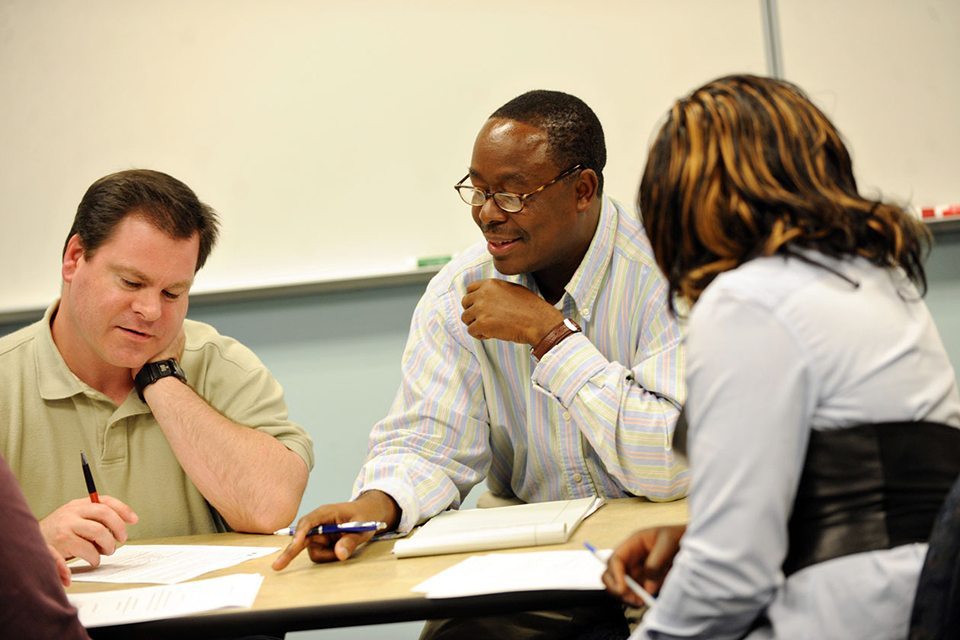
Saint Mary’s ranks in top 5 largest M.B.A. programs in the state
MINNEAPOLIS, Minn. — Saint Mary’s University of Minnesota recently earned a top spot on the Minneapolis/St. Paul Business Journal list of largest Master of Business Administration (M.B.A.) programs in Minnesota.
Saint Mary’s is fifth on the list with a total of 281 M.B.A. students enrolled in fall 2017, which is up 54.4 percent from the previous year. This significant increase is unique to the five largest programs ranked by Minneapolis/St. Paul Business Journal. Other schools saw significantly smaller increases, while some even saw a decline.
Holly Tapper, J.D., Saint Mary’s M.B.A. program director, credits a large portion of the enrollment growth to the program’s new online presence. In addition to M.B.A. programs in the Twin Cities, Rochester, and Winona, Saint Mary’s began a successful online program in May 2016.
“When we started the online program our main concern was that the students would cannibalize from our on-campus programs and that we would see a dip in those, but we haven’t,” said Tapper. “The other locations are either up in enrollment or stable, which means that the online program so far has really recruited from a different audience.”
According to the Business Journal, there were 5,178 students in Minnesota M.B.A. programs as of fall 2017. The top five schools enroll 4,460 of these students total, which is roughly 77 percent of the entire list. The total number of students is up about 4 percent from last year.
Tapper believes the reason Saint Mary’s M.B.A. program has been so successful is due in part to its accelerated, practitioner-led learning model. Saint Mary’s instructors are leaders in their field who provide real-world examples and help students develop a professional network that will support them in their education and beyond.
“The Saint Mary’s M.B.A program is unique in that students have the opportunity to choose from three emphasis areas which are hot careers right now — social media and marketing, data analytics, and environmental management sustainability,” Tapper said. “We also offer an international capstone course and 26 additional special topics course options, which allow students to explore other areas they may be interested in.”

Fighting sexual harassment
Dr. Susan Strauss believes educational system must step up to play a larger role
The list of high-profile men — in media, in sports, in entertainment, and in politics — who are being fired due to inappropriate sexual behavior continues to grow longer.
Susan Strauss D’07, for one, isn’t surprised.
“I guess what surprises me is that finally it’s all erupting; there are women coming forward to proclaim what they’ve experienced for years, but they had never felt safe in coming forward before,” she said. “But does it surprise me that these men are guilty of it? No, not in the least.”
Although the “#Me Too” movement is empowering women to come forward, Dr. Strauss — a national and international speaker, trainer, consultant, investigator, and an expert witness for harassment and bullying lawsuits — said the focus needs to be on how we create a culture where women are respected and no longer subjected to this harassment.
And she believes it begins with the education system. “It’s an important issue and it needs to get out,” she said. “It doesn’t just erupt once they get a job. These men have had a lot of practice in K-12, and it’s not being addressed there.”
A registered nurse as well as an accomplished author and expert witness, Dr. Strauss offices out of Burnsville. Her training and consulting work has taken her around the world, where she has counseled businesses, government, healthcare, and education organizations. Not surprisingly, she’s been interviewed on numerous local, international, and national media outlets including NBC Nightly News, World News Tonight, the New York Times.
An alumna of Saint Mary’s Ed.D. in Leadership program, Dr. Strauss knows, from her research and consulting experience, that a large percentage of women in the workforce are being sexually harassed, and many are never reported. But how do we even begin to make a change?
Too often boys being aggressive is passed off as “boys being boys,” she said. “We have to examine how our society sustains patriarchy and misogyny. We have to look at how we educate little boys to view little girls as people, and not as inferior. As much as we tell little girls they can be anything they want to be, we need to be sure little boys know that too. They can be a ballet dancer or play the violin, and they don’t have to play football. The box of masculinity needs to be countered. It starts in the home, and then in school they reinforce gender norms and stereotypes.
“If boys are taught to express their feminine side and girls are taught they can express their masculine side in the home, then they get into schools and are harassed because they don’t fit the gender stereotype,” Dr. Strauss said. “Teachers will discriminate too, not even intentionally or consciously. They will call on boys more often. They don’t believe they do until they are videotaped and shown. They allow boys to yell out answers while girls raise their hands. We reinforce those gender norms that way. We need to look at how we perpetuate male superiority.”
Dr. Strauss believes the educational system, at every level, needs to play a conscious role in battling harassment and bullying. “We have to have speakers about this. But merely having speakers and conducting training to faculty and staff and education to students isn’t enough she said. We need to address the issues from a systems perspective. We need to have teachers trained about unconscious bias and how that presents itself in the classroom. We need to offer specific coursework. And in higher education, it needs to be integrated into every academic discipline. How does sexual harassment impact economics, for example? Are there classes about gender studies that include masculinity and feminism? Often, I hear there are classes about feminism, but where are the classes that deal with masculinity to challenge men’s introspection?”
In the end, Dr. Strauss said there is much work to be done to counteract a culture where sexual harassment is the norm, which is why she decided to become a consultant full-time about 15 years ago.
Not long after, Dr. Strauss went back to school for her doctorate. She heard about Saint Mary’s from a friend. “She said, ‘I have found a university that fits with our values and beliefs.’ I was 54, but I had always wanted my doctorate and like to learn, so I registered,” she said. “I loved it. I thought it was very rigorous, and it was an excellent fit.”
For her dissertation, Dr. Strauss was able to conduct research that was especially meaningful to her as an RN. Her dissertation was titled, “Quantitative and qualitative analysis of physician abuse as gender harassment to female and male registered nurses in the operating room.”
“Saint Mary’s had a couple of different tracks in leadership. One was more organizational, which fit beautifully with what I do as a consultant. It worked perfectly for me.”
Dr. Strauss admits that her work can be both stressful and exhausting. “My passion is providing training and strategic development to organizations seeking to create respectful, healthy workplaces free of discrimination,” she said. “It gives me purpose, and I hope to make workplaces a little bit better. It makes me angry that it occurs in the first place, but my work gives me a place to focus my anger.”
